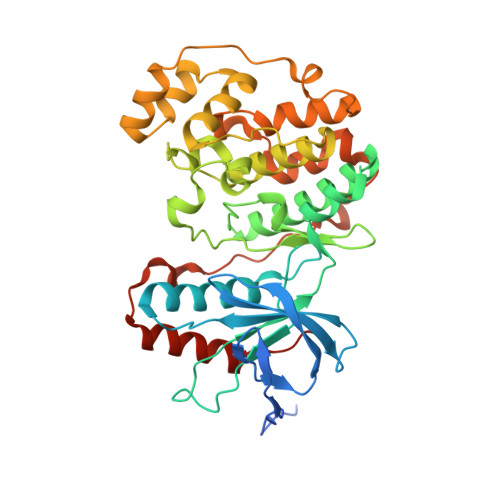Discovery of highly selective and potent p38 inhibitors based on a phthalazine scaffold.
Herberich, B., Cao, G.Q., Chakrabarti, P.P., Falsey, J.R., Pettus, L., Rzasa, R.M., Reed, A.B., Reichelt, A., Sham, K., Thaman, M., Wurz, R.P., Xu, S., Zhang, D., Hsieh, F., Lee, M.R., Syed, R., Li, V., Grosfeld, D., Plant, M.H., Henkle, B., Sherman, L., Middleton, S., Wong, L.M., Tasker, A.S.(2008) J Med Chem 51: 6271-6279
- PubMed: 18817365
- DOI: https://doi.org/10.1021/jm8005417
- Primary Citation of Related Structures:
3DS6, 3DT1 - PubMed Abstract:
Investigations into the structure-activity relationships (SAR) of a series of phthalazine-based inhibitors of p38 are described. These efforts originated from quinazoline 1 and through rational design led to the development of a series of orally bioavailable, potent, and selective inhibitors. Kinase selectivity was achieved by exploiting a collection of interactions with p38alpha including close contact to Ala157, occupation of the hydrophobic gatekeeper pocket, and a residue flip with Gly110. Substitutions on the phthalazine influenced the pharmacokinetic properties, of which compound 16 displayed the most desirable profile. Oral dosing (0.03 mg/kg) of 16 in rats 1 h prior to LPS challenge gave a >50% decrease in TNFalpha production.
Organizational Affiliation:
Department of Medicinal Chemistry, Amgen, Inc., Thousand Oaks, California 91320-1799, USA. brad.herberich@amgen.com















